Strategic Expansion and Technology Integration
Introduction
UMCA – Rich Tree Academy, located in Vaughan, Ontario, Canada, is a prestigious educational institution that delivers high-quality school education in accordance with the Canadian Education Board guidelines. Renowned for its commitment to academic excellence, Rich Tree Academy has successfully conducted in-person classes, fostering a conducive learning environment for its students. Recognising the evolving educational landscape and the increasing demand for flexible learning options, the academy sought to expand into the blended learning space, combining traditional in-person instruction with online learning modalities. To facilitate this strategic expansion, UMCA – Rich Tree Academy partnered with Druid Systems to develop and implement a comprehensive plan that would ensure a seamless transition to a modern, integrated learning environment.
Challenges
As UMCA – Rich Tree Academy embarked on its journey to integrate blended learning, it encountered several challenges that necessitated expert intervention:
- Vision Documentation: Articulating a clear and comprehensive business vision canvas to guide the transition into blended learning was essential but complex.
- Operational Procedure Development: Establishing robust operational procedures to support the new blended learning model required meticulous planning and standardisation.
- System Capability Evaluation: Assessing the effectiveness of existing operational systems in supporting the blended learning initiative was critical to identify necessary upgrades or integrations.
- Gap Identification: Identifying discrepancies between current business processes and those required for successful implementation of the blended learning vision was a key hurdle.
- Integration of Software Systems: Despite having two recently implemented software systems for learning content creation and student management, the academy faced issues with content delivery quality due to outdated user interfaces (UI), leading to low student engagement.
- Content Delivery Enhancement: Improving the UI and content creation tools to ensure engaging and interactive online learning experiences was imperative for the success of the blended learning model.
Need Any Help?
Druid Systems’ Approach
Druid Systems employed a strategic and structured approach to address UMCA – Rich Tree Academy’s challenges, ensuring that the institution could effectively transition into the blended learning space while maintaining its high standards of education.
- Comprehensive Business Vision Canvas
- Vision Workshops: Conducted collaborative workshops with the academy’s leadership to define and document a broad-level Business Vision Canvas, outlining the goals, objectives, and strategic direction for the blended learning expansion.
- Strategic Alignment: Ensured that the business vision was aligned with the institution’s core values and long-term educational goals, providing a clear roadmap for implementation.
- Operational Procedure Documentation
- Process Mapping: Documented existing operational procedures and identified those that needed modification or enhancement to support the blended learning model.
- Standard Operating Procedures (SOPs): Developed detailed SOPs to streamline operations, ensuring consistency and efficiency across both in-person and online learning environments.
- Implementation Framework: Created an implementation framework that outlined the steps, timelines, and responsibilities for adopting new operational procedures.
- System Capability Evaluation
- Current Systems Assessment: Evaluated the capabilities of the recently implemented software systems for learning content creation and student management to determine their suitability for supporting blended learning.
- Performance Analysis: Analysed system performance, identifying limitations in content delivery quality and user interface design that hindered student engagement.
- Scalability Review: Assessed the scalability of existing systems to accommodate the increased demands of blended learning, ensuring they could support future growth.
- Gap Analysis and Solution Planning
- Identifying Gaps: Conducted a thorough gap analysis to pinpoint discrepancies between current business processes and those required for effective blended learning implementation.
- Solution Development: Developed a comprehensive plan to bridge identified gaps, focusing on enhancing system capabilities, improving content delivery, and optimising operational workflows.
- Technology Integration and UI Enhancement
- Integrated Platform Proposal: Recommended multiple software solutions that could be integrated with existing investments to create a cohesive and modern learning environment.
- UI Modernisation: Proposed enhancements to the user interface of the learning content creation system, ensuring a more engaging and intuitive experience for students.
- Content Creation Tools: Identified and recommended advanced content creation tools that facilitate the development of interactive and visually appealing online courses.
- Cost and Implementation Planning: Provided detailed cost analyses, ease of implementation assessments, and scalability considerations for each proposed solution, ensuring informed decision-making.
- Implementation and Training
- Step-by-Step Implementation: Managed the end-to-end implementation of the recommended solutions, ensuring seamless integration with existing systems.
- Staff Training: Delivered comprehensive training programmes for educators and administrative staff to ensure effective utilisation of new tools and processes.
- Change Management: Facilitated change management initiatives to promote adoption and minimise resistance, fostering a culture of continuous improvement and innovation.
Conclusion
The collaboration between UMCA – Rich Tree Academy and Druid Systems exemplifies the pivotal role of strategic planning and technological integration in educational institutions. By addressing operational inefficiencies, enhancing system capabilities, and modernising content delivery, Druid Systems enabled UMCA – Rich Tree Academy to successfully expand into the blended learning space. This partnership not only improved operational efficiency and student engagement but also positioned the academy for sustainable growth and continued excellence in providing high-quality education.
Impact
Druid Systems’ intervention resulted in transformative improvements for UMCA – Rich Tree Academy:
- Clear Strategic Vision: The documented Business Vision Canvas provided a clear and actionable roadmap for the blended learning expansion, aligning all stakeholders towards common goals.
- Optimised Operations: Standardised operational procedures enhanced efficiency and consistency across both in-person and online learning environments, reducing redundancies and streamlining workflows.
- Enhanced System Capabilities: Upgraded and integrated software systems supported the seamless delivery of blended learning, ensuring robust performance and scalability.
- Improved Content Delivery: Modernised UI and advanced content creation tools significantly enhanced the quality and engagement of online courses, resulting in higher student satisfaction and participation rates.
- Effective Gap Bridging: The comprehensive plan to address identified gaps ensured that the academy could transition smoothly into the blended learning space without disrupting existing operations.
- Increased Efficiency and Reduced Errors: Automation of key processes and improved system integration reduced manual errors and administrative burdens, allowing staff to focus on delivering high-quality education.
- Scalable Solutions: The implemented solutions were designed with scalability in mind, positioning UMCA – Rich Tree Academy for future growth and the ability to adapt to evolving educational demands.


